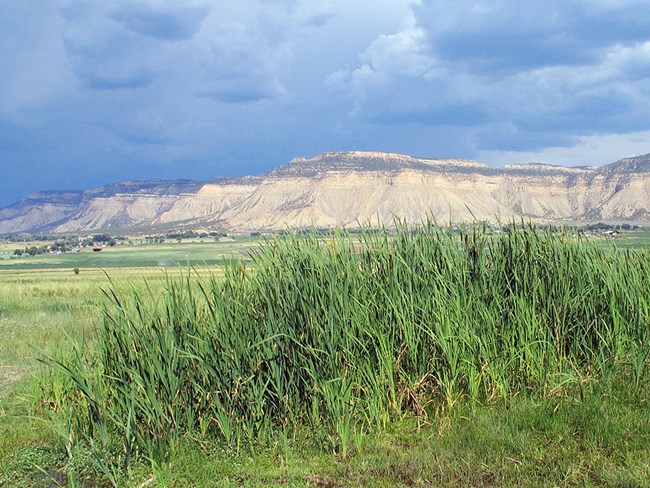
NPS
Yucca House National Monument encompasses 35 acres (14 ha) in southwestern Colorado. It was established in 1919 to preserve a large, unexcavated Ancestral Puebloan archeological site.
A desert-shrub community is the dominant habitat in the monument, with pockets of riparian habitat associated with three perennial springs. Two amphibian, 75 bird, 25 mammal, and 10 reptile species have been reported at Yucca House.
Monitored Here
Species Lists
Select a Park:
Select a Species Category (optional):
Visit NPSpecies for more comprehensive information and advanced search capability. Have a suggestion or comment on this list? Let us know.
Life Zones
Yucca House NM has a very narrow elevation range (5,797-5,922 ft / 1,767–1,805 m), primarily eastern and southern exposures, and experiences an average annual precipitation of 13 inches (330 mm). Semi-Desert Grassland/Shrub Steppe is the only life zone contained within Yucca House NM.

Climate Summary Chart
Charts are an effective way to summarize and graphically represent climate variables. The following chart is based on the diagrams developed for vegetation studies by Walter and Lieth in 1967. Visit our climate page for more information.

Reports & Publications
Inventories are point-in-time surveys that help us learn about the resources in our parks. Information obtained through the Southern Colorado Plateau Network’s inventories of park resources helped to establish a base level of data, which has served as a starting point for our natural resource monitoring.
Source: NPS DataStore Saved Search 3515 (results presented are a subset). To search for additional information, visit the NPS DataStore.
Source: NPS DataStore Saved Search 3280 (results presented are a subset). To search for additional information, visit the NPS DataStore.
Last updated: November 6, 2018
